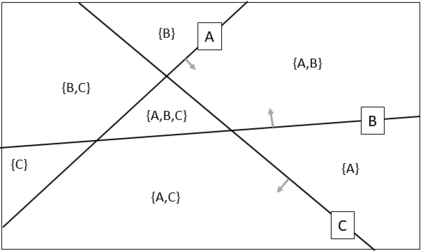Conformal predictors are an important class of algorithms that allow predictions to be made with a user-defined confidence level. They are able to do this by outputting prediction sets, rather than simple point predictions. The conformal predictor is valid in the sense that the accuracy of its predictions is guaranteed to meet the confidence level, only assuming exchangeability in the data. Since accuracy is guaranteed, the performance of a conformal predictor is measured through the efficiency of the prediction sets. Typically, a conformal predictor is built on an underlying machine learning algorithm and hence its predictive power is inherited from this algorithm. However, since the underlying machine learning algorithm is not trained with the objective of minimizing predictive efficiency it means that the resulting conformal predictor may be sub-optimal and not aligned sufficiently to this objective. Hence, in this study we consider an approach to train the conformal predictor directly with maximum predictive efficiency as the optimization objective, and we focus specifically on the inductive conformal predictor for classification. To do this, the conformal predictor is approximated by a differentiable objective function and gradient descent used to optimize it. The resulting parameter estimates are then passed to a proper inductive conformal predictor to give valid prediction sets. We test the method on several real world data sets and find that the method is promising and in most cases gives improved predictive efficiency against a baseline conformal predictor.
翻译:共变预测器是一个重要的算法类别,它使预测能够以用户定义的信心水平进行,它们能够通过输出预测数据集而不是简单的点预测来进行。符合的预测器是有效的,因为它保证其预测的准确性达到信任水平,只是假设数据的互换性。由于准确性得到保证,一个符合的预测器的性能是通过预测集的效率来衡量的。通常,一个符合的预测器是建立在一个基本的机器学习算法之上的,因此其预测力是从这一算法中继承的。然而,由于基础的机器学习算法没有受过尽量减少预测效率的培训,这意味着由此产生的符合的预测器可能是次最佳的,与这个目标不完全吻合。因此,在本研究中,我们考虑采用一种方法,直接训练符合的预测器,以最高预测效率作为优化目标,我们特别侧重于感应感性符合的预测器。为了做到这一点,符合的预测器被一个不同的目标函数和梯度下降的下降率用于优化预测效率。因此,在正确的预测中,我们采用一种正确的预测法是正确的方法。





